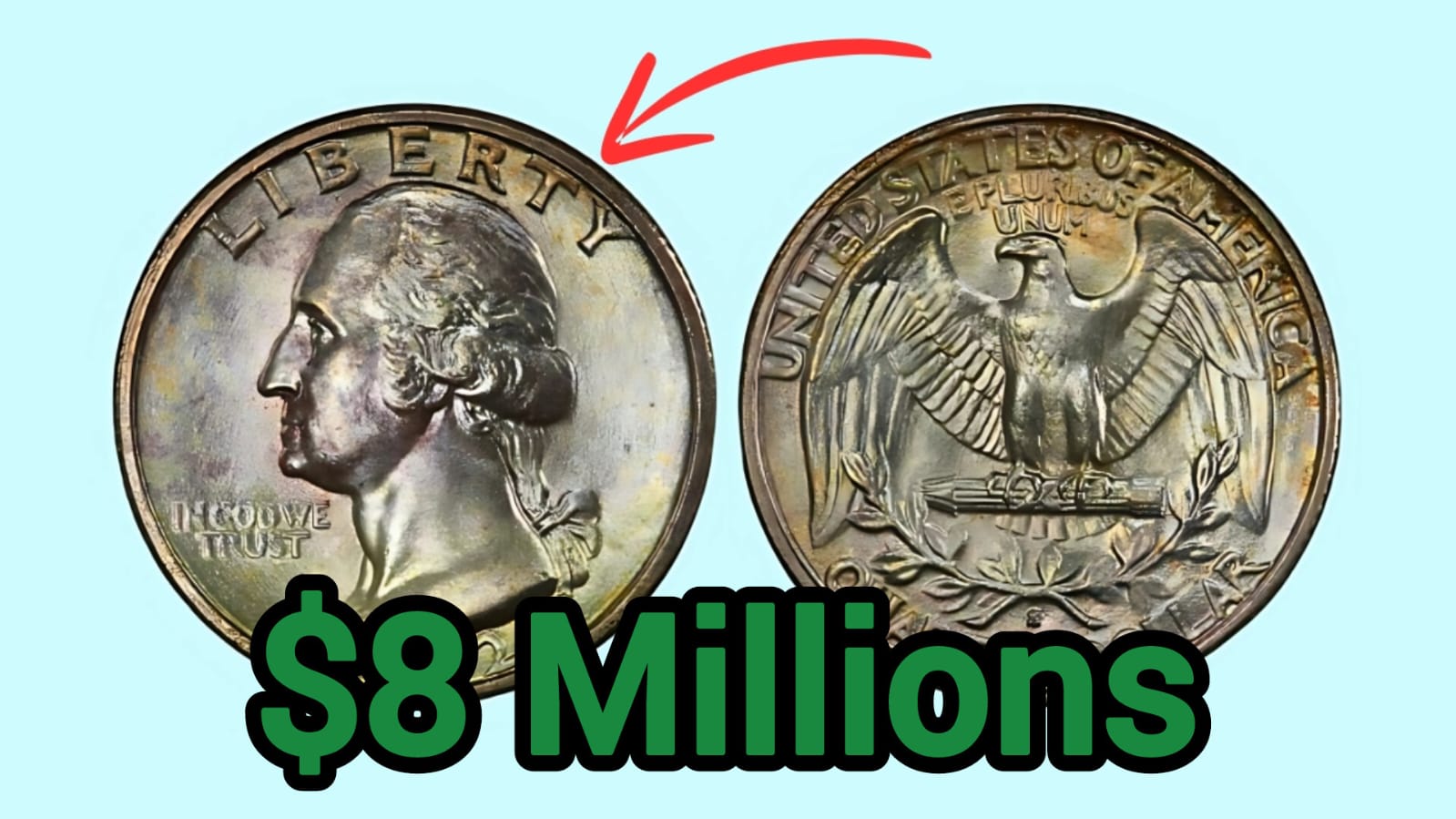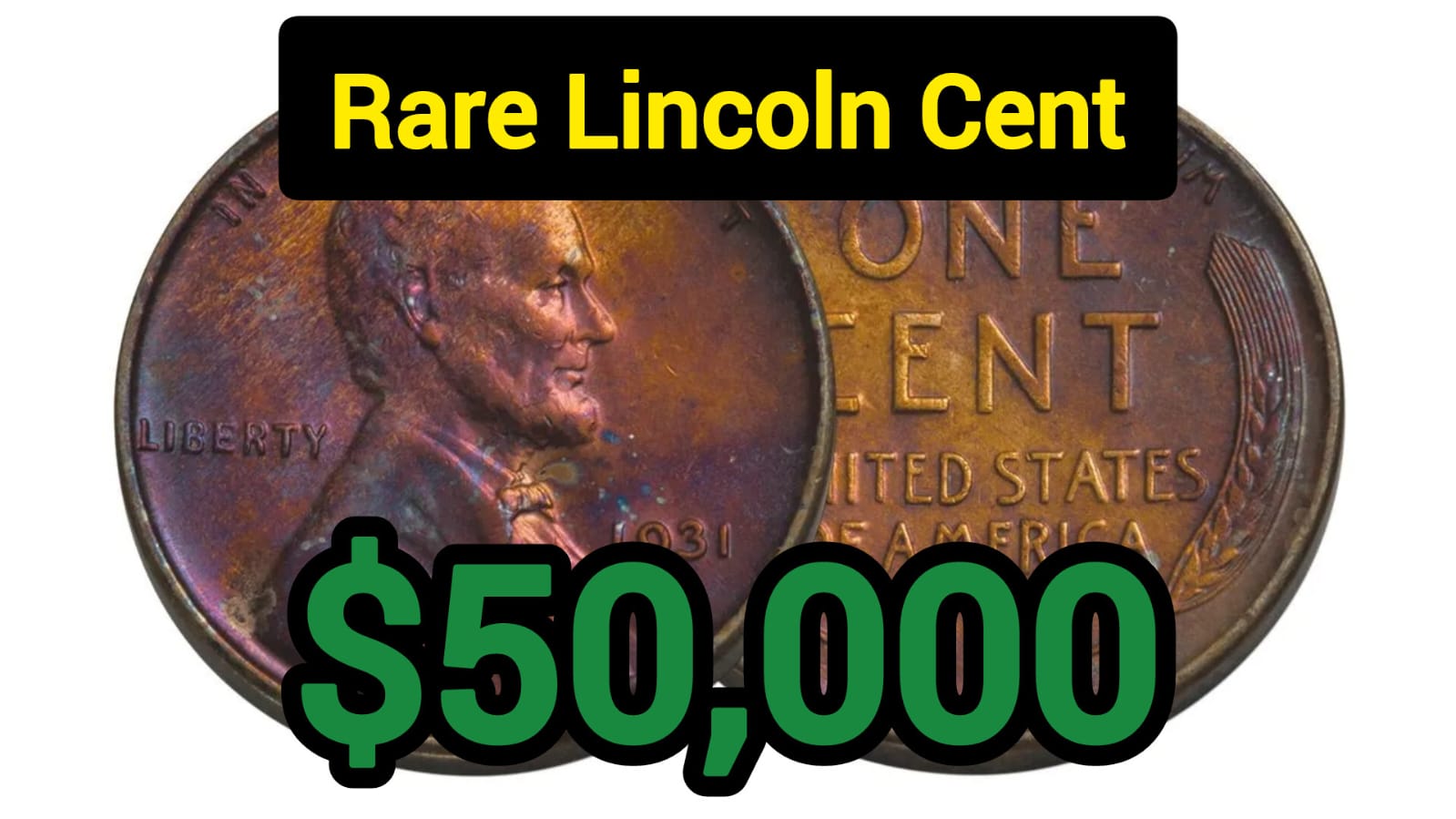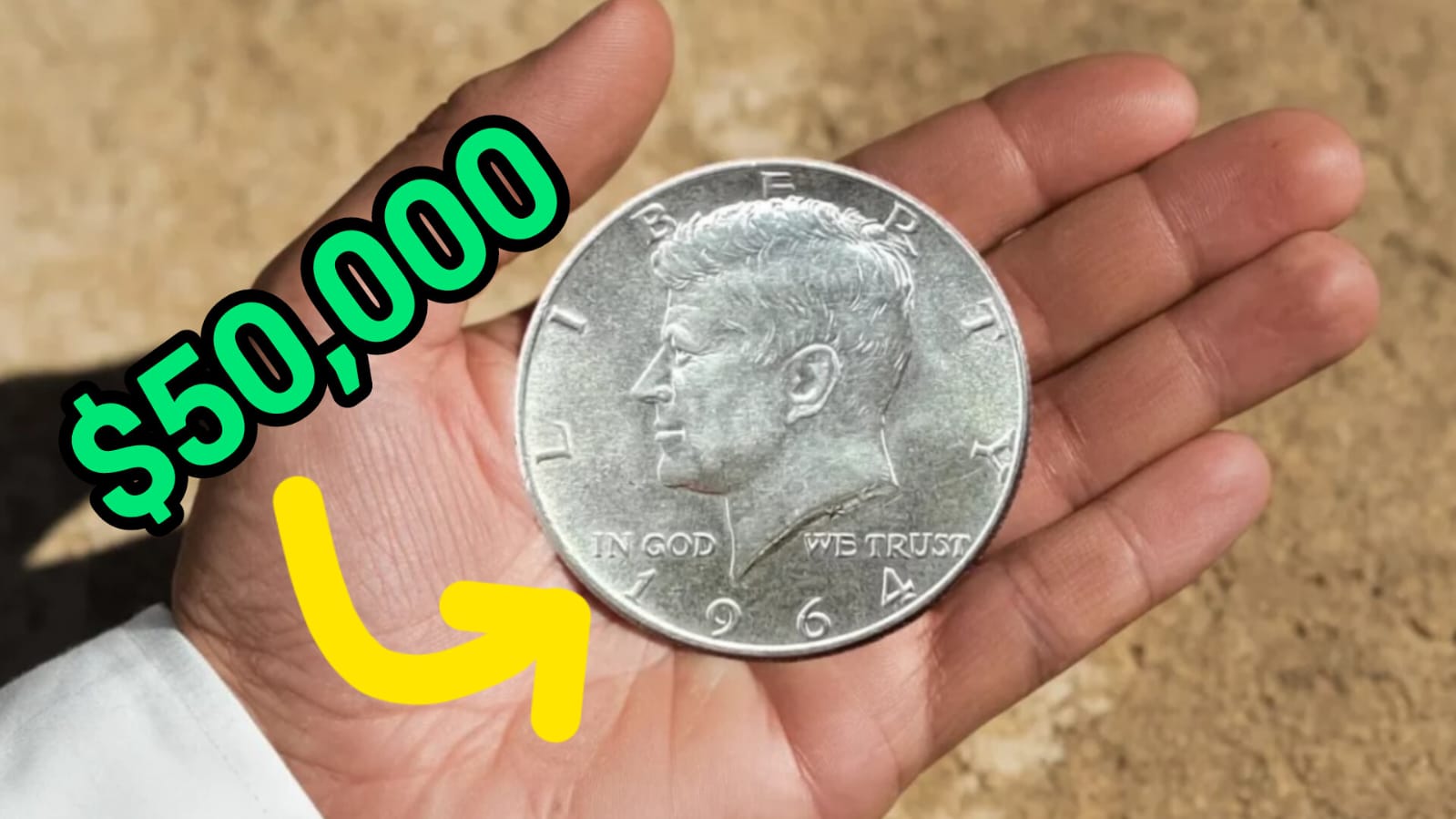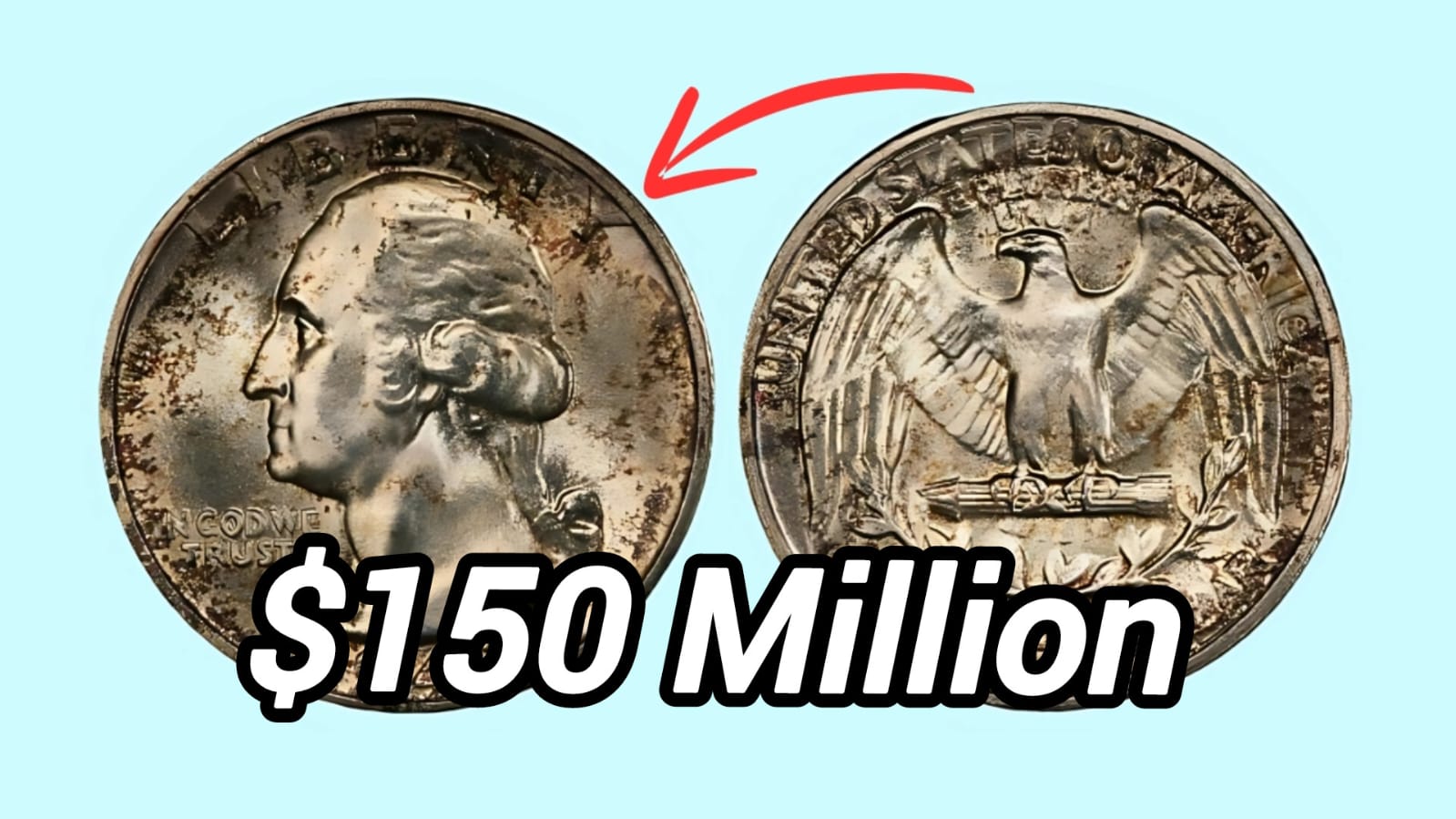Bicentennial Quarter: Have you ever wondered if that loose change jingling in your pocket might contain a hidden treasure? Well, it just might! Among the billions of quarters circulating in America, a few rare specimens could be worth millions.
One particular standout is the 1975 No S Proof Bicentennial Quarter, valued at nearly $8 million. Yes, you read that right – a single quarter potentially worth more than many mansions!
But what makes this coin so extraordinarily valuable, and could you possibly have one hiding in your coin jar?
The Bicentennial Quarter, minted in 1975 and 1976 to commemorate America’s 200th birthday, is a familiar sight to most Americans. With its distinctive colonial drummer design and dual date “1776-1976,” these quarters were produced in massive quantities.
While most are worth just 25 cents, certain rare varieties and minting errors have transformed some into numismatic gold. Let’s dive into the fascinating world of these valuable quarters and discover what separates an ordinary coin from an $8 million treasure.
What Makes the Bicentennial Quarter Special?
Before we explore the ultra-rare varieties, let’s understand what makes Bicentennial Quarters unique in the first place. Designed to celebrate America’s bicentennial anniversary, these special quarters feature a colonial drummer on the reverse side instead of the usual eagle design.
They also display the dual date “1776-1976” on the obverse, commemorating 200 years of American independence.
The U.S. Mint began producing these commemorative quarters in 1975 and continued through 1976, releasing them into general circulation.
They were minted at three locations: Philadelphia (no mint mark), Denver (“D” mint mark), and San Francisco (“S” mint mark). While billions were produced for everyday use, special collector versions were also created, including proof coins and silver compositions.
Think of these quarters as time capsules in coin form – each one representing a celebration of American history. But among these billions of quarters, a few rare specimens stand out for their exceptional value.
The $8 Million Holy Grail: 1975 No S Proof Bicentennial Quarter
The crown jewel of Bicentennial Quarters is undoubtedly the 1975 No S Proof Bicentennial Quarter. This incredibly rare error coin lacks the “S” mint mark that should appear on proof coins struck at the San Francisco Mint.
According to recent valuations, this coin is worth nearly $8 million, making it one of the most valuable modern U.S. coins in existence.
What makes this coin so extraordinarily valuable is its extreme rarity. Only a handful are known to exist – likely fewer than 20 authenticated specimens.
This missing mint mark resulted from a production error, dramatically boosting the coin’s value. It’s like finding a Picasso painting at a garage sale – an extraordinary treasure hiding in plain sight.
The error occurred during the special proof minting process, where coins are struck with polished dies on polished blanks, creating a mirror-like finish.
Somehow, dies without the crucial “S” mint mark were used for a small batch of these special collector coins. By the time the error was discovered, a few had already made their way into proof sets sold to the public.
Other Valuable Bicentennial Quarter Varieties
While the No S Proof is the most valuable, several other Bicentennial Quarter varieties command impressive prices:
- 1976-S Silver Proof Bicentennial Quarter – These special quarters contain 40% silver and were only available in proof sets. In perfect condition (graded PR70), they can sell for up to $19,200.
- 1976-D Bicentennial Quarter with Double Die Obverse – This error creates a doubling effect on the obverse design, particularly visible in the date and lettering. Top specimens have sold for up to $8,400.
- 1976 Bicentennial Quarter Struck on Wrong Planchet – These extremely rare error coins were mistakenly struck on the wrong type of metal blank. Some examples have reportedly sold for up to $900,000.
- 1976-D Bicentennial Quarter with Clipped Planchet – These coins have a distinctive “bite” taken out of the edge due to a minting error. They can fetch up to $20,000 in excellent condition.
How to Identify a Valuable Bicentennial Quarter
Now that you know these treasures exist, how can you determine if your Bicentennial Quarter might be worth a fortune? Here’s a step-by-step guide:
- Check the Mint Mark – Look on the obverse (front) side of the coin, just to the right of Washington’s ponytail. You’ll find either no mint mark (Philadelphia), “D” (Denver), or “S” (San Francisco). For the rare No S Proof, you’d be looking for a proof coin (mirror-like finish) that should have an S but doesn’t.
- Examine the Composition – Regular Bicentennial Quarters are copper-nickel clad, while special silver versions contain 40% silver. Check the edge of the coin – silver quarters have a solid silver-colored edge, while regular quarters show a copper stripe.
- Look for Errors – Using a magnifying glass, examine the coin for doubling in the lettering (especially “LIBERTY” and the date), off-center strikes, or other minting errors.
- Assess the Condition – Coins in pristine, uncirculated condition are worth significantly more than those showing wear. Proof coins should have a mirror-like background with frosted design elements.
| Bicentennial Quarter Type | Key Features | Estimated Value |
|---|---|---|
| 1975 No S Proof | Proof finish, missing S mint mark | Nearly $8 million |
| 1976-S Silver Proof | 40% silver, mirror-like finish | Up to $19,200 |
| 1976-D Double Die Obverse | Visible doubling on lettering | Up to $8,400 |
| Wrong Planchet Error | Struck on incorrect metal | Up to $900,000 |
| Clipped Planchet Error | “Bite” missing from edge | Up to $20,000 |
| Regular Circulated | Standard copper-nickel | 25 cents |
What to Do If You Think You Have a Valuable Quarter
If you believe you’ve found a valuable Bicentennial Quarter, follow these steps:
Step 1: Handle with Care
Treat the coin gently to avoid causing any damage. Never clean it! Cleaning can significantly reduce a coin’s value. Instead, handle it by the edges and consider placing it in a protective holder.
Step 2: Document and Research
Take clear, well-lit photographs of both sides of the coin. Compare your coin with images of authenticated valuable specimens. Resources like the Professional Coin Grading Service (PCGS) or Numismatic Guaranty Corporation (NGC) websites can be helpful.
Step 3: Get Professional Authentication
For potentially valuable coins, professional authentication is essential. Consider having your coin evaluated by a reputable grading service like PCGS or NGC. While this service isn’t free, it’s worth the investment if you believe you have a valuable specimen.
Step 4: Explore Selling Options
If your coin proves valuable, consider various selling options:
- Reputable coin dealers
- Specialized auction houses like Heritage Auctions
- Online marketplaces catering to numismatists
Remember, the coin market is like any other collectibles market – knowledge is power, and patience often yields the best results.
Conclusion
While finding a Bicentennial Quarter worth millions is admittedly a long shot, these valuable coins do exist and occasionally surface in unexpected places.
The 1975 No S Proof Bicentennial Quarter valued at nearly $8 million represents the pinnacle of modern coin collecting, but even more modest rarities like double dies or silver proofs can be worth thousands.
The thrill of the hunt is part of what makes coin collecting so engaging. Whether you’re searching through old coin jars, inherited collections, or even your pocket change, the possibility of discovering a numismatic treasure adds excitement to an already fascinating hobby.
So, the next time you come across a Bicentennial Quarter with that distinctive colonial drummer design, take a moment to examine it closely – you never know what might be hiding in plain sight!
FAQs About Valuable Bicentennial Quarters
1. How can I tell if my Bicentennial Quarter is silver? Silver Bicentennial Quarters weigh approximately 5.75 grams (compared to 5.67 grams for standard copper-nickel quarters) and have a solid silver-colored edge with no copper stripe visible. These 40% silver quarters were only issued in special mint and proof sets, not for general circulation.
2. Are all Bicentennial Quarters with the “S” mint mark valuable? Not all S-mint Bicentennial Quarters are highly valuable. While the S mint mark indicates it was struck in San Francisco, only those in proof condition or containing silver composition command significant premiums. Regular circulated S-mint quarters may be worth slightly more than face value to collectors.
3. How rare is the 1975 No S Proof Bicentennial Quarter? The 1975 No S Proof Bicentennial Quarter is extremely rare, with fewer than 20 authenticated examples known to exist. This makes it one of the rarest modern U.S. coins, explaining its nearly $8 million valuation.
4. Should I clean my Bicentennial Quarter if I think it’s valuable? Absolutely not! Cleaning coins can significantly reduce their value to collectors. Professional numismatists prefer coins with original surfaces, even if they show some toning or patina. If you believe you have a valuable coin, consult with a professional before doing anything that might damage it.
5. Where is the best place to sell a valuable Bicentennial Quarter? For extremely valuable specimens like the No S Proof, specialized numismatic auction houses like Heritage Auctions or Stack’s Bowers would be appropriate. For more modestly valuable varieties, reputable coin dealers or online marketplaces catering to collectors can be good options. Always research current market values and get multiple opinions before selling.
Get Up to $699.50 Per Fortnight as Austudy in 2025 – Check You’re Eligible or Not? How to Apply?
Big Hike in Australia’s Age Pension From April 2025, Are You Eligible? Check Here!



